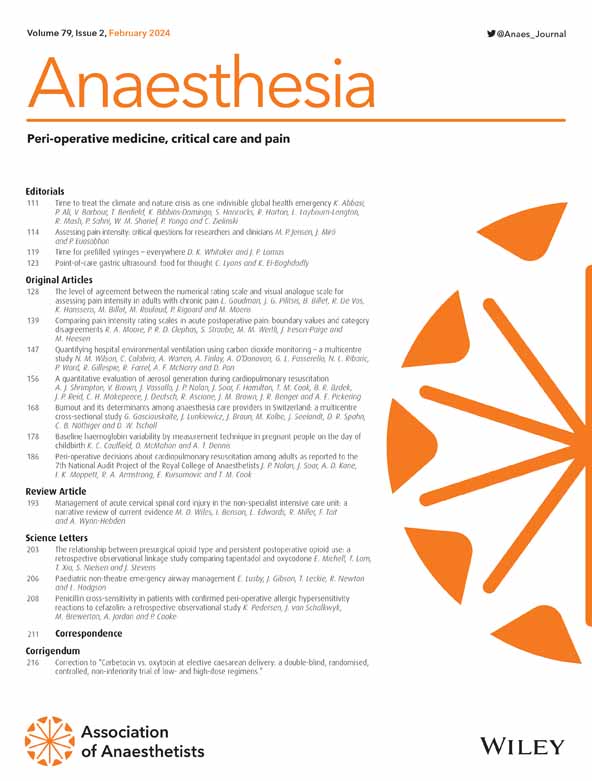Patient perception of consent processes for epidural analgesia in induction of labour: a qualitative study.
IF 7.5
1区 医学
Q1 ANESTHESIOLOGY
引用次数: 0
Abstract
INTRODUCTION Women undergoing induction of labour often utilise epidural analgesia. Obtaining consent for labour epidural presents a unique challenge for the obstetric anaesthetist, who must comply with the legal standards of consent. This study explores how women perceive the consent process for epidural analgesia during induction of labour. METHODS This was a qualitative, single-centre, interview-based study. Fourteen women who received an epidural for labour analgesia were interviewed using a semi-structured interview guide. Data were analysed using thematic analysis. RESULTS Four themes described women's experience of the consent process. Understanding alternatives, risks and benefits; for example, time constraints hindering the effective communication of information around epidural analgesia, including alternative analgesic options. Timing of information; for example, the value of information was diminished by pain, fatigue and the imminence of the procedure. Timing of consent; for example, physiological and psychological demands of labour negatively impacted patients' ability to engage with the consent process. Anaesthetists' assessment of patient understanding; for example, confirmation of patient understanding by anaesthetists was lacking. DISCUSSION Women's experiences of the consent process for induction of labour suggest that in the context of the pain and exhaustion of labour, inadequate and untimely information provision and dialogue between women and their anaesthetists can undermine the implementation of lawful consent.患者感知同意过程硬膜外镇痛引产:定性研究。
引产妇女常采用硬膜外镇痛。获得硬膜外分娩的同意对产科麻醉师来说是一个独特的挑战,他们必须遵守同意的法律标准。本研究探讨了妇女在引产过程中如何感知硬膜外镇痛的同意过程。方法本研究为定性、单中心、访谈研究。采用半结构化访谈指南对14名接受硬膜外分娩镇痛的妇女进行了访谈。采用专题分析对数据进行分析。结果四个主题描述了女性在同意过程中的经历。了解替代方案、风险和收益;例如,时间限制阻碍了硬膜外镇痛的有效信息交流,包括替代镇痛方案。信息的时机;例如,信息的价值因疼痛、疲劳和手术的迫近而降低。同意的时间;例如,分娩的生理和心理需求对患者参与同意过程的能力产生了负面影响。麻醉师对患者理解程度的评估;例如,麻醉师缺乏对病人理解的确认。妇女同意引产过程的经验表明,在分娩疼痛和疲惫的情况下,不充分和不及时的信息提供以及妇女与麻醉师之间的对话可能会破坏合法同意的实施。
本文章由计算机程序翻译,如有差异,请以英文原文为准。
求助全文
约1分钟内获得全文
求助全文
来源期刊

Anaesthesia
医学-麻醉学
CiteScore
21.20
自引率
9.30%
发文量
300
审稿时长
6 months
期刊介绍:
The official journal of the Association of Anaesthetists is Anaesthesia. It is a comprehensive international publication that covers a wide range of topics. The journal focuses on general and regional anaesthesia, as well as intensive care and pain therapy. It includes original articles that have undergone peer review, covering all aspects of these fields, including research on equipment.
 求助内容:
求助内容: 应助结果提醒方式:
应助结果提醒方式:


